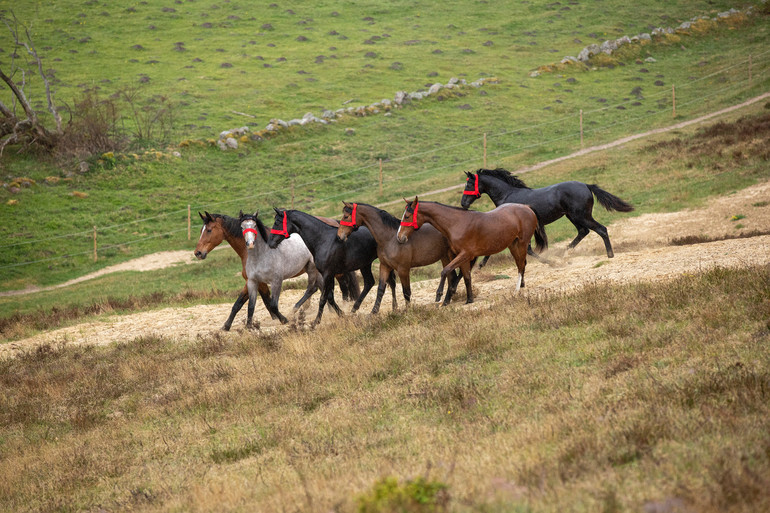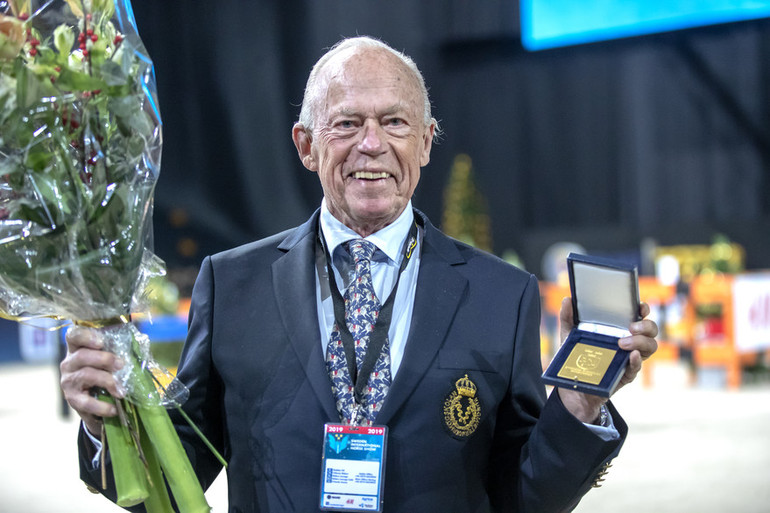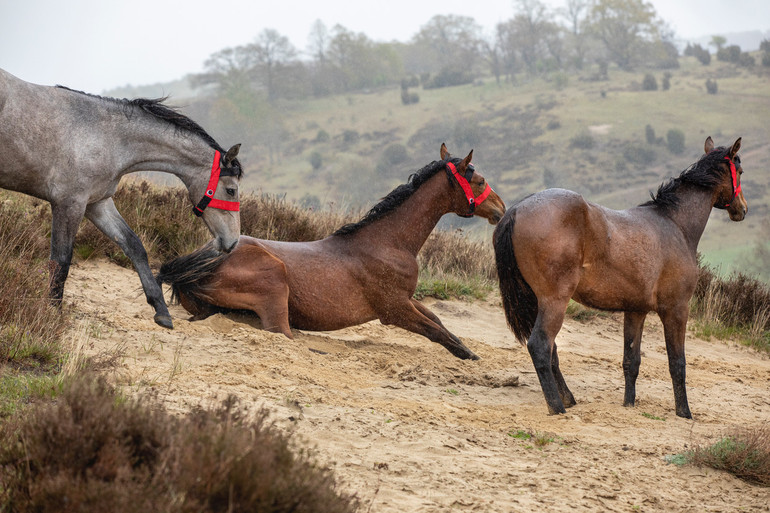Text © World of Showjumping
Last year, the non-profit organization Hästen i Skåne (The Horse in Skåne) launched a project where it monitored a heard of young horses in a hilly area called the Brösarps-backar – which stretches over 70 hectares in the south of Sweden. The idea was to observe how the young horses developed when moving freely in a diverse terrain over a longer period of time. The project is now in its second year, and World of Showjumping called up project leader Professor Ingvar Fredricson Vet Med Dr, PhD to learn more.
“My whole life I have been working to prevent lameness, and this will be my last project,” 83-year-old Fredricson explains. “It is common and old knowledge that horses which move a lot when they grow up will develop into healthy and sustainable individuals, while young horses that are more static will be weaker. Foals need to use their hooves and legs during their first three months to get strong cartilage – while the skeleton, ligaments and joints develop until the horse is 2,5 years old. After that we can only preserve, not improve.”
This year the project has been expanded to include two reference groups that will be used as comparison to the one at Brösarps where the horses go on natural pasture: One reference group of young horses is in a similar sized field but without hilly terrain and with cultivated pasture, while one group of young stallions is in a hilly field of about 50 hectare.
The horses are being monitored with revolutionary sensors from HoofStep, placed on their foreheads. The sensors measure how much and where the horses are moving. Through an app, the sensors also send out an alert if a horse is showing uncharacteristic behaviour – for example if the horse hasn’t chewed in several hours, has been laying down longer than usual and so on. “It only takes a couple of days for the sensors to recognise the horses’ normal behaviour. We also have someone that will do daily checks on the horses, and we are using a drone too. The drone checks on the fencing in the mornings and evenings and then goes higher up so we can count the horses and move in closer to check for any visible injuries,” Fredricson says.
Nine yearlings are already out at Brösarps. Before they were brought there, they were measured, weighed and photographed – which also will be done when they come back. The horses in the two reference groups have also gone through the same procedure. “At the end of the season last year, there was not that much grass left so this year we have created a place where we can give the horses extra food if needed. We don’t want them to get fat, but obviously also not too skinny,” Fredricson says.
While the current project is now in its second year, Fredricson has a lot of previous experience to count on. Already in 2002, he did a similar project with young horses but at that time, a more difficult terrain was used. “That terrain was too tough for the horses though. Some of them got some smaller injuries, which we did not have last year. We learned a lot from the first project, but the interest was not there. Now, 15 years later the time feels right,” Fredricson tells.
Fredricson and his team also believe that the project will help put Sweden on the map as a country where horses can grow up in a healthy way. “We are currently working on a certificate with requirements on how to monitor the horses,” he says. “Owners have to feel safe to leave their horse in one of these fields, and in the future it will also be possible for them to follow their horse over an app day and night”, Fredricson says.
“We need sustainable horses, especially in today’s market where a lot of them are sold very expensive even at an early age. Buyers often look to the breeding of the horse, that both the father and mother have performed well in the sport. However, many seem to forget about another equally important factor: How the horse grew up,” Fredricson concludes.
No reproduction withouth written permission, copyright © World of Showjumping











